Hosting a Trump-Kim summit: The Singapore experience
Singapore – At first it was on, then off, and then on again – in the end, Singapore had just two weeks to get everything ready for the much-anticipated, first-ever encounter between a sitting US president and North Korean leader.
That such a strategically complex and delicate event came off as seemingly flawless – despite the short lead – offers lessons to Vietnam‘s Hanoi, the site of the second summit between Donald Trump and Kim Jong Un on February 27-28.
“Vietnam has a slightly easier job in that the US and North Korean governments have a template of sorts, a playbook, from the Singapore summit last June,” Eugene Tan, associate professor of law at Singapore Management University, told Al Jazeera.
“Singapore certainly has been consulted by Vietnam, and Singapore will provide as much input as requested. It’s more about ironing the kinks from the first summit and should be easier the second time around.”
It certainly wasn’t easy the first time.
 |
| Police officers lead Kim’s motorcade heading to Capella Hotel [File: Yong Teck Lim/AP Photo] |
The top organisational issue in the lead-up to the Singapore summit on June 12, 2018 was security, starting with the physical protection of the two leaders and the safety of the locations of their respective hotels and meeting site. Once those spots were agreed upon by the US and North Korean advance teams, each side needed to separately approve every detail surrounding the high-stakes talks.
Plans needed to be developed for crowd control and inevitable inconveniences to the public, including roadblocks, diversions, delays and security checks.
Airspace would have to be limited to make way for military air patrols, and commercial air travellers would have to expect delays on flights in and out of Singapore.
Water patrols would also have to be stepped up, particularly in the waters surrounding the tiny resort island of Sentosa where Trump and Kim were to meet.
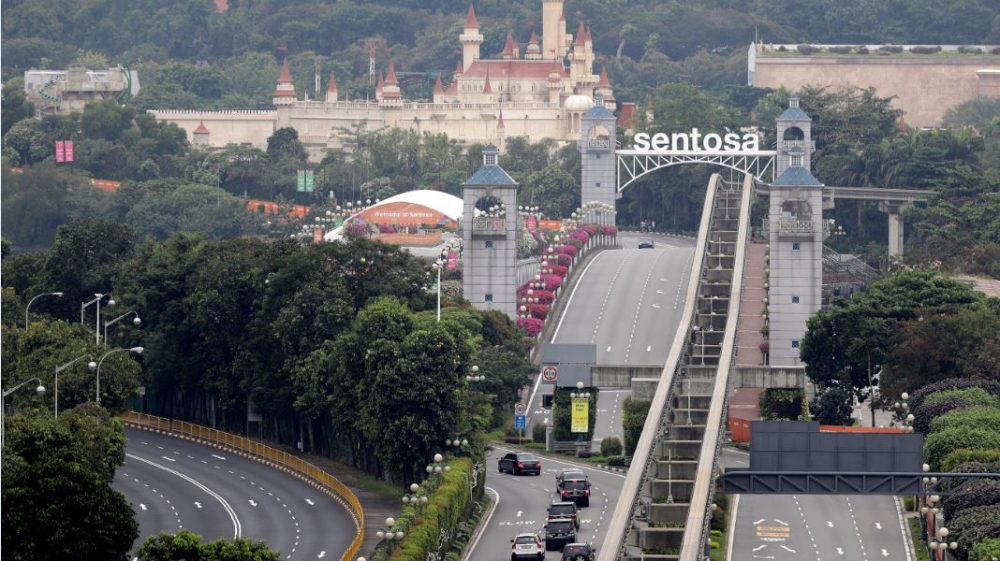 |
| The summit was held on the tiny resort island of Sentosa, connected by a single bridge to Singapore’s main island [File: Wong Maye-E/AP Photo |
Navy ships would have to be deployed in the waters surrounding the meeting location with helicopters circling above, while patrol vessels would have to escort passing ships.
In addition to the unpredictability of the first face-to-meeting among formerly sworn enemies, diplomatic challenges included the politically sensitive question of who would foot the bill for Kim and his delegation at one of Singapore’s priciest hotels – and how Singaporean taxpayers would feel about that.
Next was the question of what to do with the media circus coming to town – more than 2,500 journalists were accredited to cover the summit.
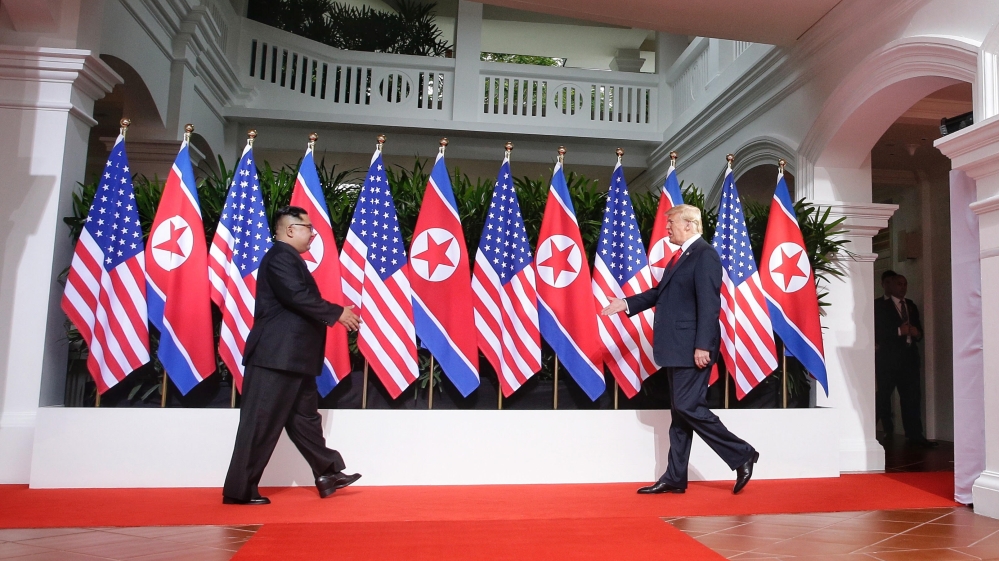 |
| Kim and Trump moments before their historic handshake [File: Kevin Lim/The Straits Times] |
Template for Hanoi
These challenges and others had to be settled quickly – comparable summits can be scheduled six months to a year in advance, according to diplomats and protocol officers.
Diplomatic teams from both countries spent the days leading up to the Singapore summit crisscrossing Sentosa island to case out venues and hash out protocol – down to the careful matters of honouring the notion of a meeting of equals, such as having separate doors through which Trump and Kim would enter into their first greeting.
Singapore meanwhile scrambled to find Korean speakers among its own police and civil defence officers to help communicate and translate with the North Korean entourage.
Police and security-related personnel were told not to take time off around the time of the summit, and the nation’s armed forces were told to stand by, along with fighter jets and attack helicopters.
In addition to deploying some 5,000 police, civil defence, and other officers, Singapore additionally employed private security firms to support access control, crowd control, traffic management duties and other security measures.
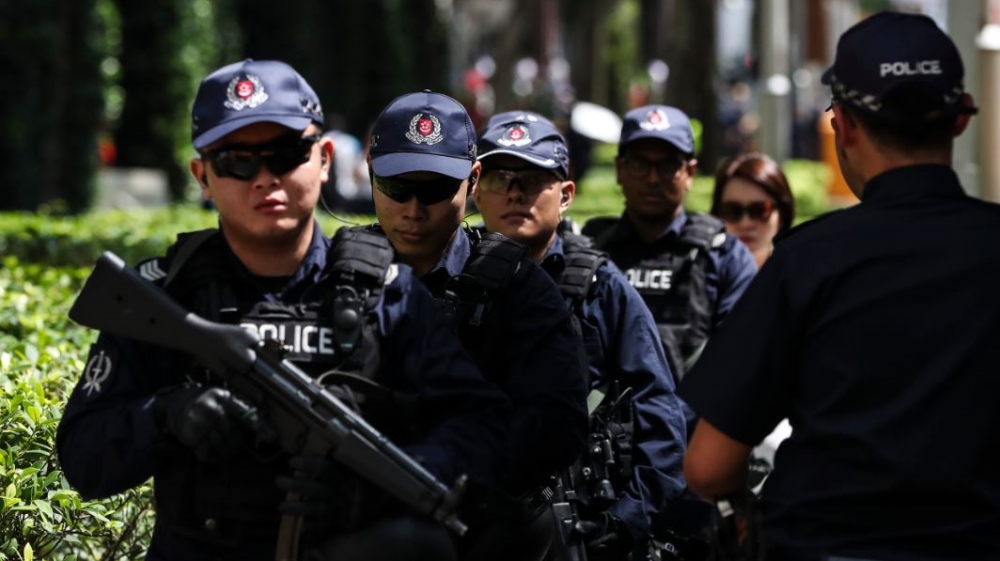 |
| Police officers patrol outside the St. Regis Hotel, the hotel chosen for Kim’s stay [File: Yong Teck Lim/AP Photo] |
Jogging bodyguards
Although Singapore, like Hanoi, keeps tight control over public demonstrations, officials had to be watchful for public spectacles.
In addition to reporters and TV camera crews wandering across the island, passersby and onlookers would naturally be expected to stop and watch the action – such as Kim’s bodyguards in Western style-suits jogging along his motorcade, a common sight when the security-conscious North Korean leader ventures out in public.
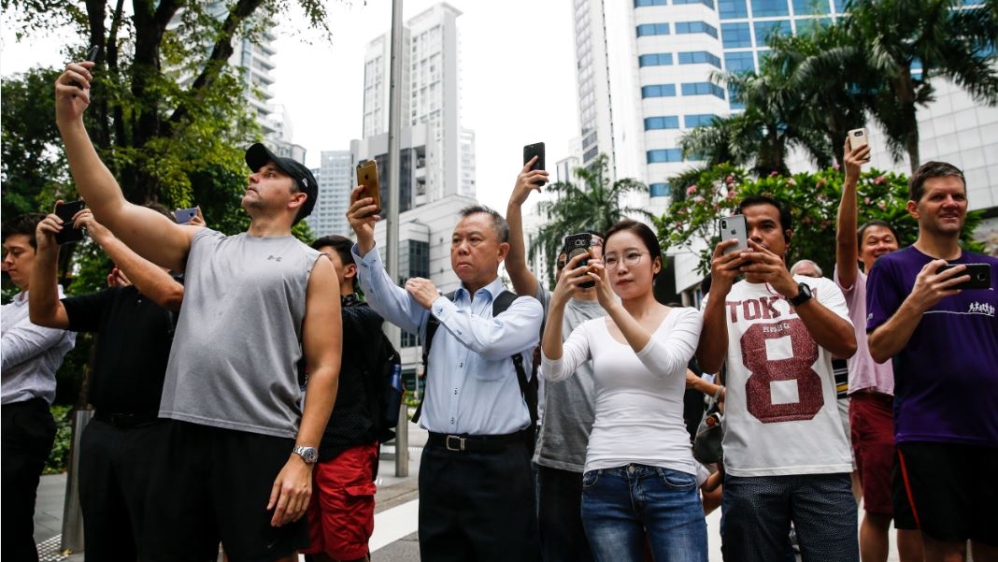 |
| Members of the public in Singapore take photos of Kim’s motorcade [Yong Teck Lim/AP Photo] |
Multiple security zones were set up.
The first was at the summit site itself, held where access could be controlled on Sentosa island at an old colonial-era manor now called the Capella, a luxury five-star hotel and resort.
The second zone was some eight kilometres away, in Singapore’s Tanglin area where the two leaders and their entourages were based. The luxury Shangri-La Hotel was chosen for Trump’s stay, while the equally high-end St. Regis Hotel was selected for Kim – the two hotels are roughly 800 metres apart.
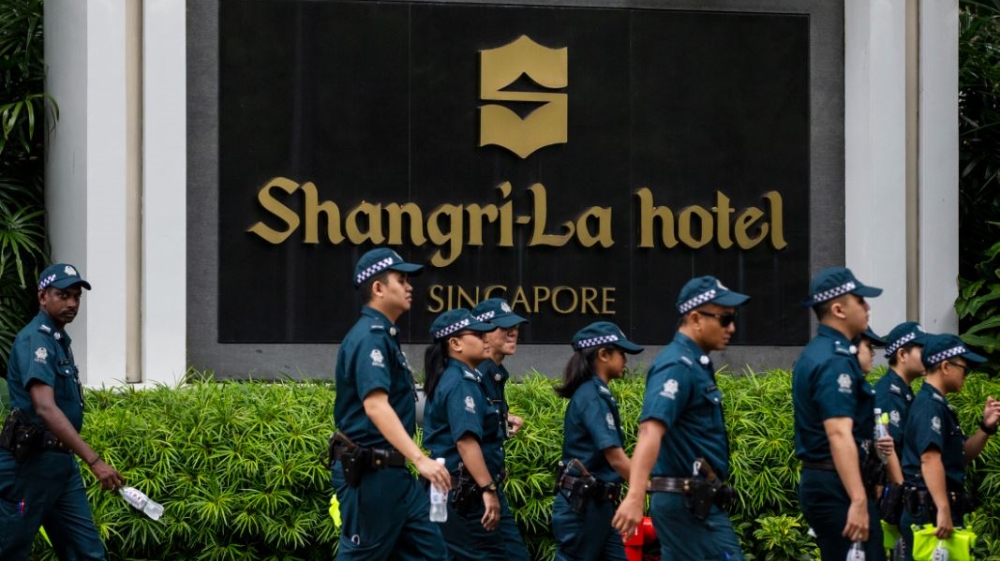 |
| Trump stayed at the luxury Shangri-La Hotel [File: Yong Teck Lim/AP Photo] |
Signs of high-level security included heavily armed Gurkha guards and police out in full force, but optics were not limited to displays of military hardware. World War II cannon barrels, for example, were decorated with flowers and olive branches.
Meanwhile, Singapore solved the question of where the thousands of journalists in town would work – they hastily assembled a media work station in a Formula One pit building in central Singapore, livestreaming summit events from 10km away on Sentosa.
A demonstration of Singapore’s soft power, the International Media Centre featured unusual amenities that ensured that journalists saw the best of the country’s legendary efficiency.
 |
| More than 2,500 journalists were accredited to cover the summit [File: Joseph Nair/AP Photo] |
Backlash over costs
At the time of the summit, Singapore Prime Minister Lee Hsien Loong said he expected the country to spend some $14.8m on hosting costs – a figure later lowered to $11.8m.
Some Singaporeans questioned the idea of paying for Kim’s presidential hotel suite, estimated at around $7,400 per night. The total cost for putting up the North Korean leader and his entourage has not been made public; the US delegation paid its own way, as is the norm for bilateral events hosted by a third party.
Further criticism came after Kim, accompanied by two Singapore government ministers, took in the sights surrounding the glitzy Marina Bay Sands casino and resort, a request made by North Korea to Singapore just several hours before it happened.
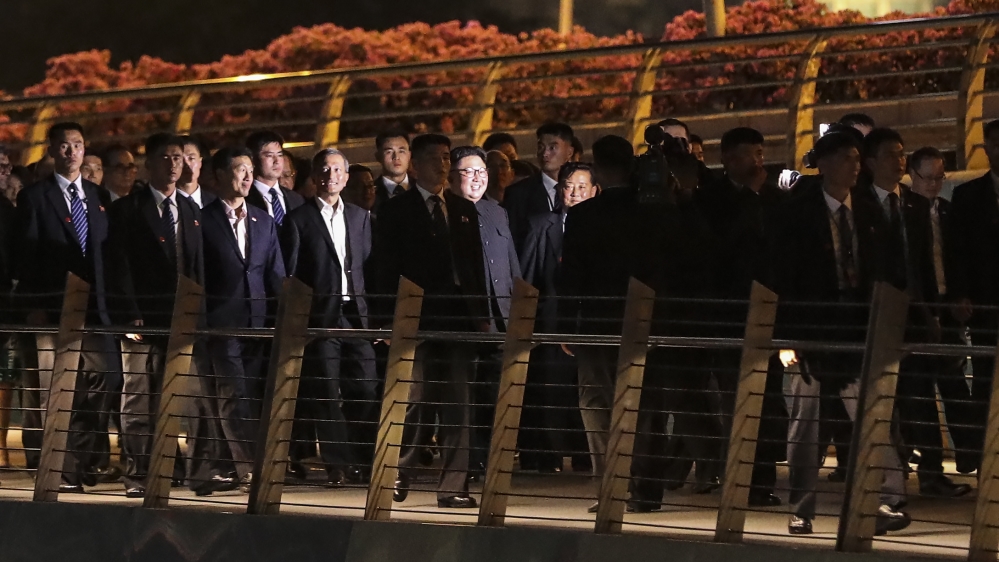 |
| Kim and his entourage visiting Singapore’s Marina Bay [File:Yong Teck Lim/AP Photo] |
Even with Singapore’s original estimate in host costs, marketing executives say the nation received at least 10 times that in positive media exposure.
Jason Tan, of the communications firm Zenith Singapore, said $14.8m would have bought around 90 seconds of commercial airtime on the largest advertising event in the United States, the Super Bowl.
“With the summit, we received a week of global coverage, positive brand halo, and genuine interest in Singapore as a country,” Tan told Al Jazeera.
Larger than positive media exposure was the boost to Singapore’s strategic importance on the world stage, said Vu Minh Khuong, an associate professor at the Lee Kuan Yew School of Public Policy at the National University of Singapore.
“The host enhances its strategic position as the place of choice for highly important events and showcases to the world it is a meaningful player in making the world a better place,” he told Al Jazeera.
Follow @tgbenner on Twitter




